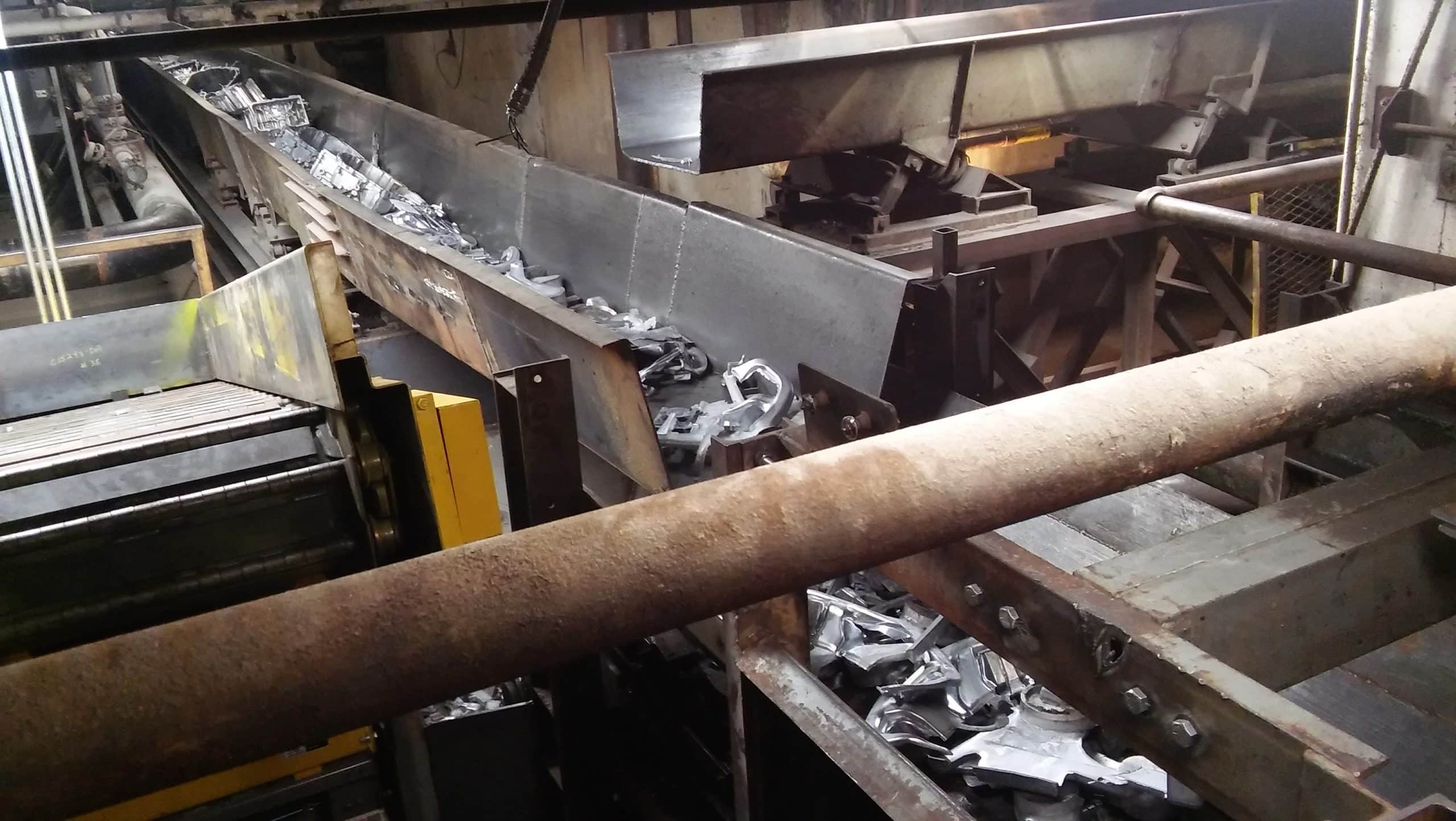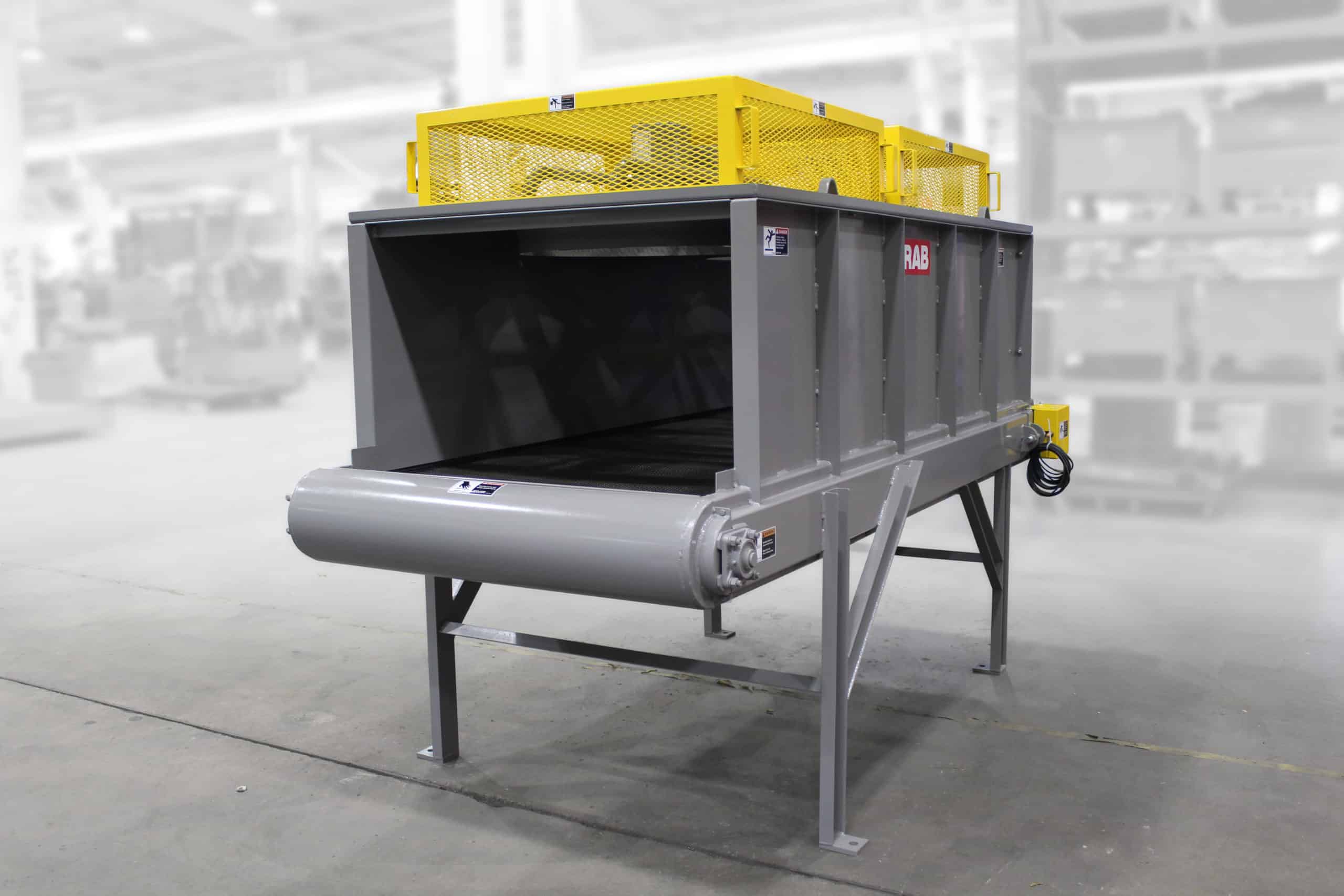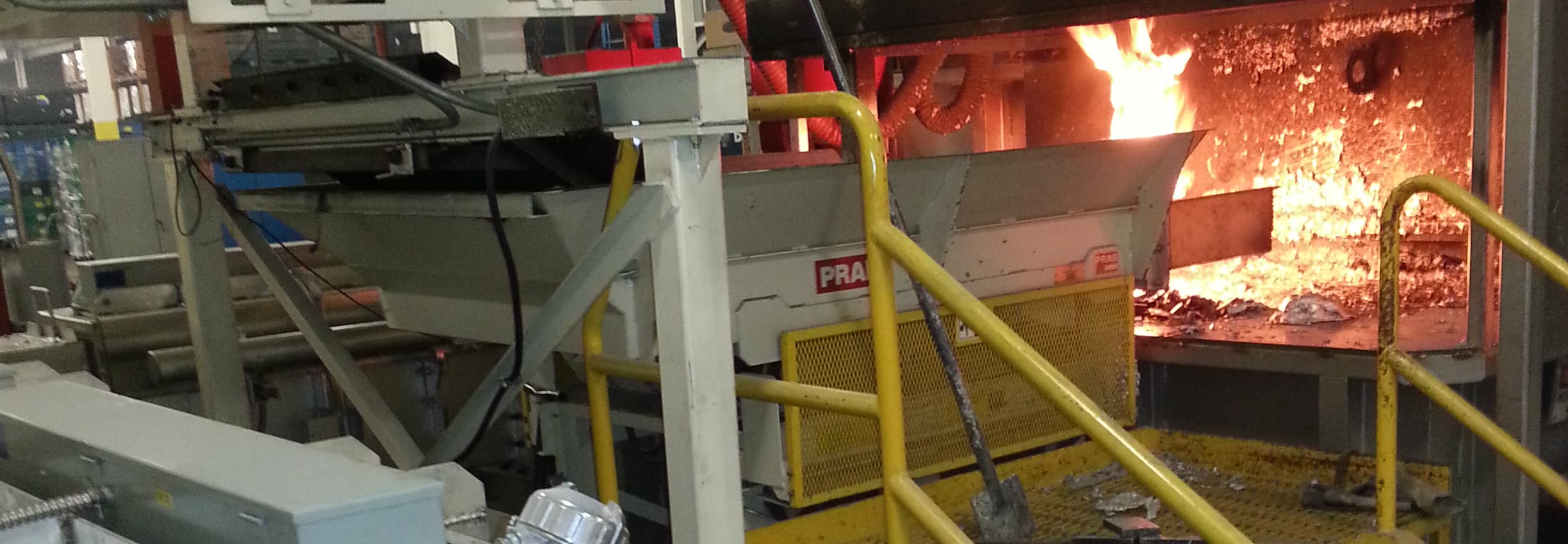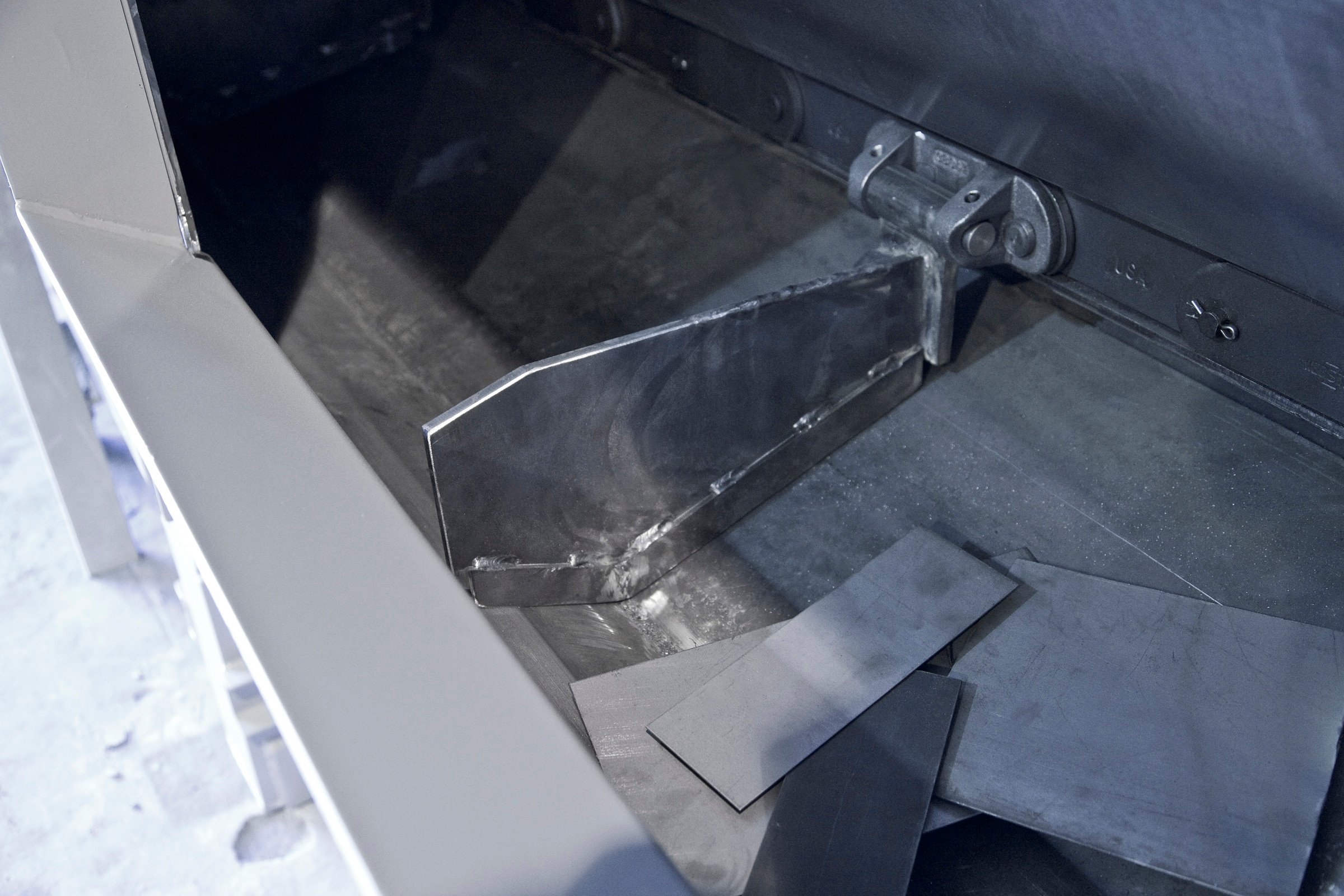
There is much that foundries and die casting operations can gain by improving metal scrap handling processes. Adding or updating conveyors is shown to reduce cycle times, raise productivity, decrease downtime, and improve workplace safety. However, not all conveyors are engineered to deliver equal performance. Conveyor design, construction, and capabilities factor into the conveyor’s effectiveness and total cost of ownership.

Equipment failures, emergency repairs, and routine maintenance can consistently cause conveyor downtime. When a conveyor is down, productivity drops.
Without question, automated material handling equipment improves productivity. In fact, using the right conveyor for the application criteria has been shown to increase productivity by up to 60%. Reliable, consistent operation is the key.
Above all, conveyors must be engineered to avoid unplanned downtime. Ensuring a positive discharge of material is critical to preventing carryover. Some conveyors are more susceptible to carryover because of how the belt is constructed. Oscillating conveyors, though, generally have no carryover. The ScrapVeyor II™ from PRAB also eliminates carryover by utilizing a drag flight to pull material toward the discharge point. The flights pivot out of the way to dislodge any stuck materials.
Conveyors that are not engineered to be efficient with energy resources generate higher expenses.
Conveyors can lower energy costs if they have the necessary capabilities. For example, furnace feeders that continuously meter-feed die scrap into the melting furnace contribute to greater energy efficiency because additional energy is not required to heat the furnace for individual melting cycles. Quench conveyors are another example. When chillers are installed on these conveyors, operators have greater control of water consumption expenses. Finally, adding new or updated controls and automation systems to monitor conveyor performance can produce actionable data that will enable further optimization of energy use. For example, conveyor controls can be programed to monitor energy spikes, wasted hours of energy use, and more.
Health and safety hazards at foundry and die casting facilities increase worker compensation costs, raise employee absenteeism, and weaken employee retention.
Adding conveyors to eliminate manual processes for moving metal inherently improves workplace safety. Forklift traffic is reduced, production becomes more ergonomic, and in the case of a furnace feeder, operators are kept a safe distance away from the high temperatures of melting furnaces. Operations that implemented conveyors have seen workplace accidents reduced by as much as 25%.
Among conveyors commonly used in foundry and die casting processes, there are additional factors to consider. Quench conveyors, which quickly cool parts and metal scrap, can produce mist that diminishes air quality in the plant. Alternatively, casting coolers run air at low speeds to cool hot die castings via single or multiple cooling zones, though they may not be practical in all applications.
Conveyors used in foundry and die casting applications take a lot of abuse. When they aren’t constructed to deliver decades of reliable operation, total cost of ownership increases. Furthermore, when supply chain challenges cause shipments of replacement parts to be delayed, or skilled labor shortages result in a lack of available technicians, downtime escalates.
Conveyors engineered to minimize or streamline routine maintenance have lower life cycle costs and contribute to higher throughput. The following conveyor features contribute to longer service life:


A metal scrap conveyor that is not optimized for the application will ultimately result in inefficient processing, more maintenance, and higher labor costs. By choosing a conveyor that eliminates carryover, consistently transfers challenging payloads, and is engineered to reduce routine maintenance, metalworking operations position their facility to increase uptime on their back-end processes.

Bob Anspaugh is a Conveyor Sales Engineer for PRAB and has 15 years of application engineering experience.
PRAB has a portfolio of over 39 customizable equipment offerings across 4 divisions, all unified under the PRAB brand—offering metal chip processing equipment, fluid filtration equipment, conveyors, industrial water & wastewater treatment equipment, parts, services, and solutions to meet the unique needs of a variety of customers and industries around the world. Products are engineered and built to last. As testimony, PRAB has equipment still operating in the field that was installed over 57 years ago. For more information visit prab.com.